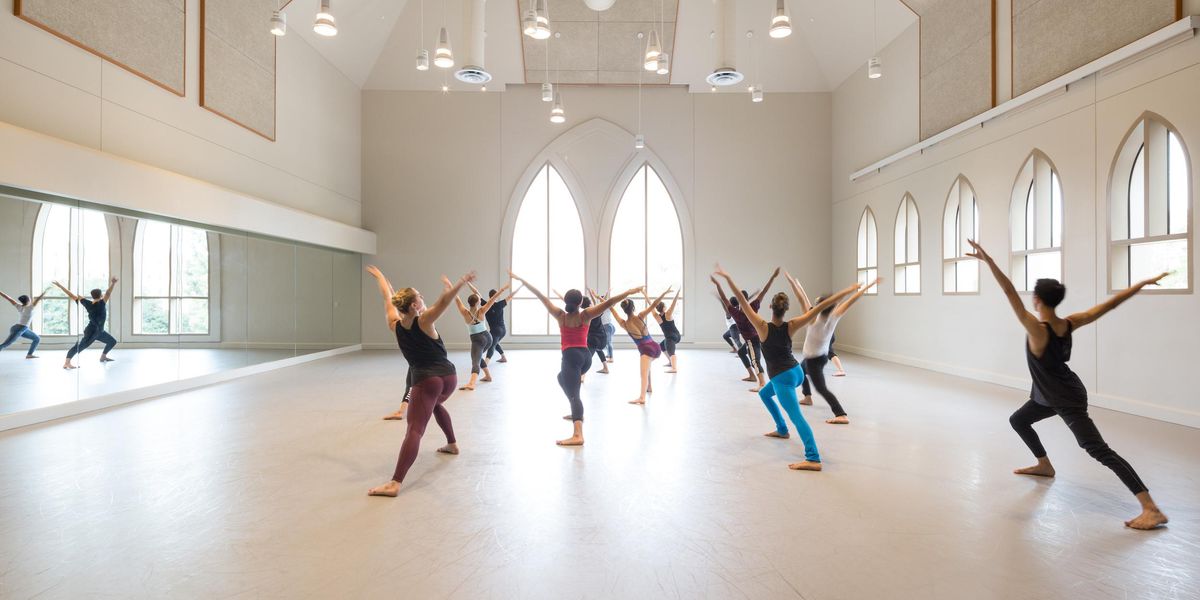China's Top Talents
How Beijing Dance Academy became a force at competitions and companies abroad
BDA students in
Swan Lake. Photo by Mu Ke, Courtesy BDA.
The corps de ballet of 24 swans entered the stage. Every pair of legs was trained to perfection and each foot placed with precision. While their lines were razor sharp, their arms were sensitively fluid. Most companies would take great pride in this Swan Lake.
But the dancers onstage weren’t professionals. They were students at China’s famed Beijing Dance Academy. In the audience, teacher Bai Shuxiang, one of the school’s first graduates, noted wryly that the students’ performance was a “considerable improvement” on the school’s early attempts of the ballet.
Over the past several years, institutions worldwide have increasingly taken notice of BDA’s students. The school, once closed off from much of the world during chairman Mao Zedong’s regime, has garnered attention since opening its doors to the West. Today, having recently celebrated its 60th year, it is famous for producing dynamic, virtuosic dancers with crisp technique. Students from Beijing Dance Academy often take home top honors at international ballet competitions such as Youth America Grand Prix and Prix de Lausanne. And alumni are currently working at coveted Western companies, including San Francisco Ballet, The Washington Ballet and Birmingham Royal Ballet. “Not only does BDA train you to become an excellent dancer and develop you into an artist onstage,” says former Royal New Zealand Ballet dancer and BDA alum Qi Huan, “but they help you build up your mental strength.”
Then and Now
Beijing Dance Academy was China’s first pre-professional ballet program, founded in 1954 to train dancers for what is now the 70-member National Ballet of China. Because ballet had few roots in the country at the time—folk dance is a long-standing Chinese tradition—Russian teachers were brought in to help establish the school, which teaches a Vaganova foundation. The defection of BDA graduate Li Cunxin (the subject of Mao’s Last Dancer) to Houston Ballet in the ’80s first brought attention to BDA.
Since the turn of the century, the school has increased collaborations with international organizations, and recently started encouraging dancers to look for jobs abroad. It has become the largest pre-professional training program in China, boasting 3,000 students and 275 teachers. Its 613,000-square-foot facility houses 47 dance studios. There are 450 students in its ballet department alone, all of whom find placement in regional and international companies, says dean Guo Lei. And though BDA was built as a ballet program, dancers can now study in seven departments, ranging from Chinese dance to choreography, with the option to earn a college degree.
Life at BDA
Most students enter the academy after completing rigorous ballet training at secondary schools in China. Dancers travel to Beijing to audition, but the academy also sends teachers to small rural towns to discover young talent. Pre-professional ballet students at BDA are generally older than those in comparable institutes in the West, entering the school between ages 16 and 18 and staying for four years. Many students try to find perfection during training rather than gather experience through performance.
Classes start early in the morning and continue until after dinner. The approach is slow and methodical. For instance, first-year students usually work on a class of set exercises for several weeks before moving on to new material. In the afternoon, students rehearse for productions and practice variations for competitions. There are two to three contemporary dance and choreography classes a week. Anatomy, injury prevention, teacher training, music education and art appreciation are also on the curriculum. Ballet students have three programs of performances each year: a full-length classical ballet, a modern dance performance and an evening of student choreography. This year’s repertoire included Swan Lake, Christopher Wheeldon’s Rush and Paul Taylor’s iconic Company B.
Above: Paul Taylor’s
Company B. Photo by Mu Ke, Courtesy BDA.
An Evolving School
Beijing Dance Academy does not currently enroll foreign students, but the school has established short-term exchanges with other institutions, including the Paris Opéra Ballet School, Royal Danish Ballet School and Vaganova Ballet Academy. Guo hopes that the school can accept international dancers someday. “We want to open our doors to welcome foreigners and learn from different cultures.”
In the meantime, BDA regularly hires international guest teachers to bring diversity to students’ training. During the celebrations for the school’s 60th anniversary in November, Nina Ananiashvili, artistic director of State Ballet of Georgia, encouraged the girls to release the tension in their necks. Frank Andersen, former artistic director of Royal Danish Ballet, introduced the ease and elegance of the Bournonville style, a challenge for students more attuned to virtuosity. Kenneth Greve, artistic director of Finnish National Ballet, repeated the idea, “Dance smart. Don’t dance hard.” Though the dozen sweaty young students in class smiled and nodded, anything less than gut-busting effort is generally unthinkable, as the BDA dancers strive for perfection.




